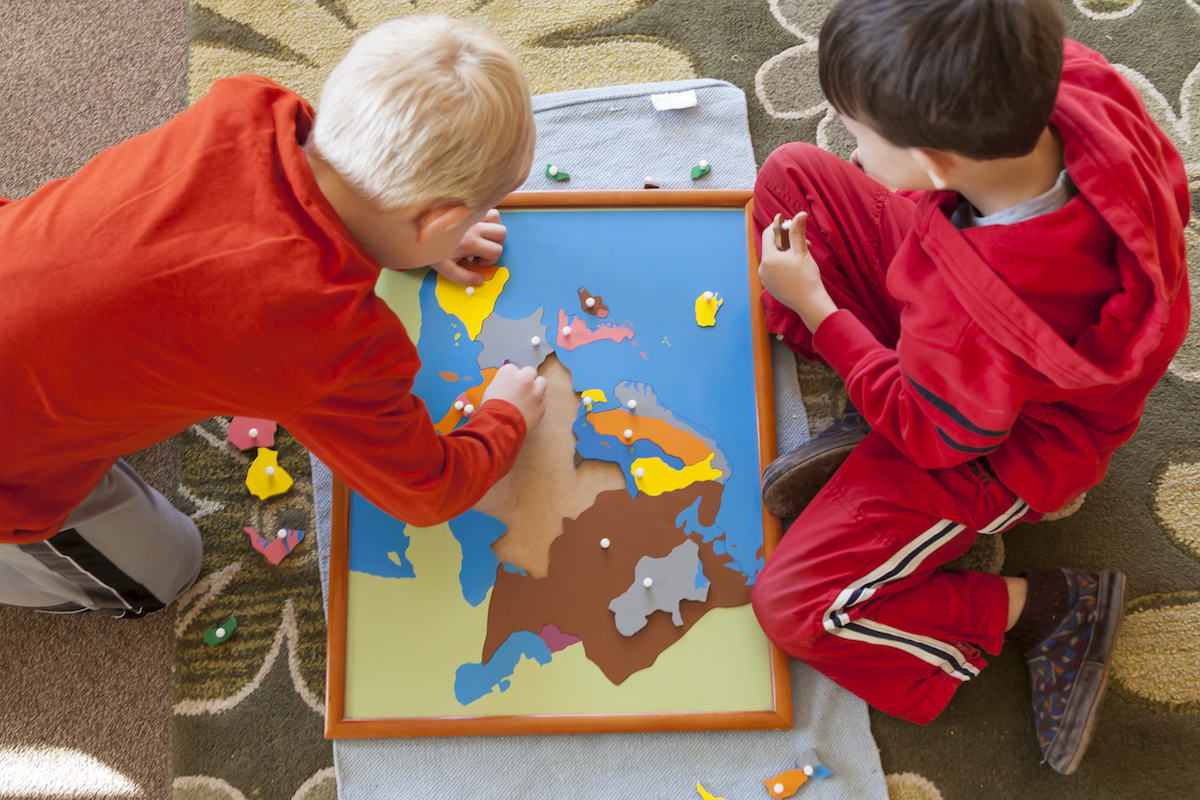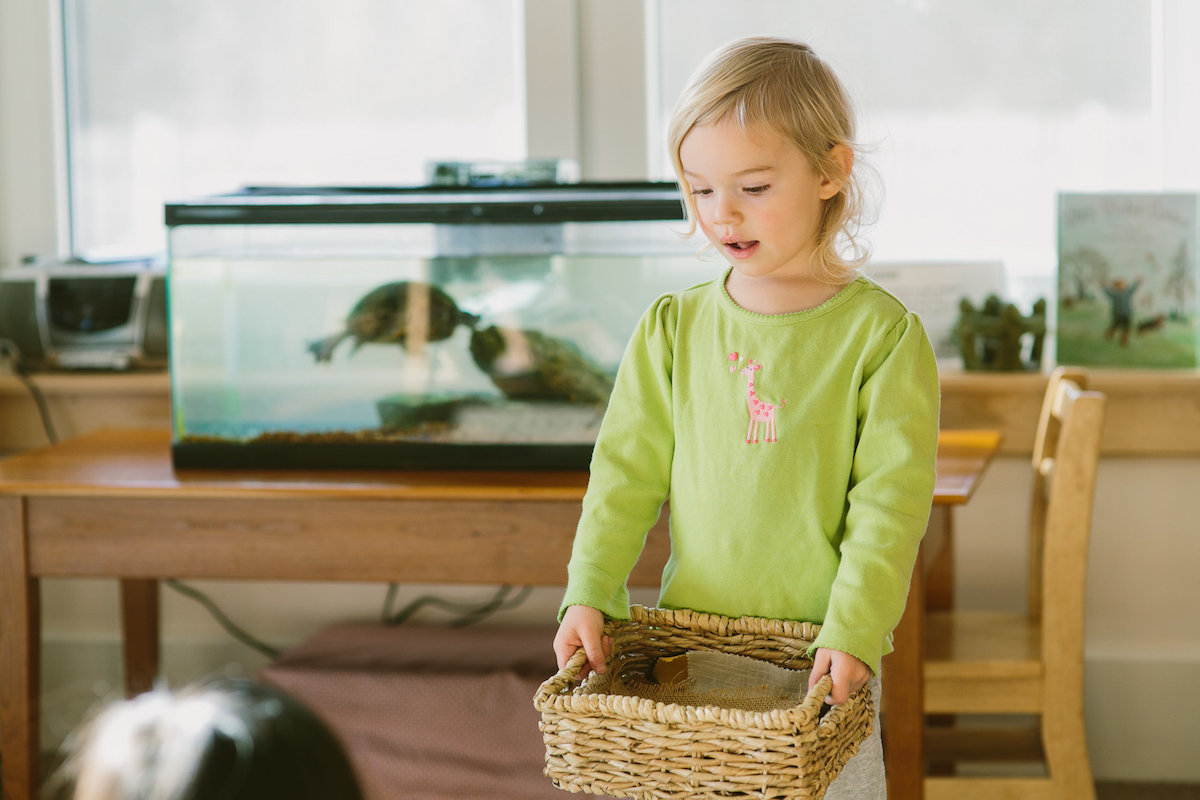Anxiety is a completely normal part of the human experience. Both adults and children experience anxiety from time to time. As children grow, they go through so many changes physically, cognitively, and emotionally, it’s understandable that they may feel nervous occasionally. You will likely notice your child pass through a number of phases in which they display anxious behaviors.
If you feel like your child’s anxiety is more than just a phase it’s important to talk to your pediatrician. Anxiety can negatively affect people in a myriad of ways, and it’s important for kids with chronic worry to get help that will change those patterns.
The good news is there are things we can do at home and school to help children deal with their anxiety, both proactively and reactively.
In the Moment
It helps to have some strategies on hand for when a child is experiencing anxiety. It can be difficult to learn a new skill while our bodies are experiencing nervousness, so try these out with your child while they are calm the first time.
Mountain breath - This is a kid version of the well-known 4-7-8 technique. If you’re not already familiar, Harvard graduate Dr. Andrew Weil developed the simple exercise. After releasing the air from your lungs, breath in for a count of 4, hold your breath for a count of 7, and release the breath slowly for a count of 8. This slows your breathing while also allowing your body to absorb more oxygen. Ideally 4-7-8 should be practiced several times a day and then used as needed. For the children’s ‘mountain breath’ version, have your child hold up all five fingers on one hand. Using the index finger of the opposite hand, they will trace up and down each of the five fingers, pretending they are mountains. Say, “We climb up the first mountain (breath in), stopping at the top to look around at the view (hold breath). Then we climb down this side (breath out)”. They continue this with the remaining four fingers. The count of 4-7-8 is less important for kids than the pattern and practice. For more information on Dr. Weil’s technique check out this video:
Grounding exercise - The amygdala is a small, almond-shaped cluster located deep inside the brain. It’s one of the most primitive parts of our brains and serves many functions. The amygdala is connected to fear conditioning, and is connected to why we react in fearful ways to certain situations and stimuli. Think of it as your fight or flight center.
When we are in the midst of panic, our brains lose the ability to behave according to the reality of a current situation. Our bodies feel like there is great danger and our amygdala is feeding those false connections. The good news is there are tools we can teach children to trick that part of their brain and remind themselves that they are safe.
A grounding exercise uses the senses to remind the brain there isn’t really any immediate danger and that we are safe. As a quick reference, remember “5,4,3,2,1”. First, we use our sense of sight. We look around and locate five things we see and name them, simply. This can be done aloud or in our heads. For example, we may say, “Light. Floor. Hand. Paper. Table.” Next, we identify four things we can feel, and touch them as we name them. “Hair. Fabric. Wood. Skin.” We then name three things we can hear. “Breath. Fan. Car.” The final two steps include identifying two things we smell and one thing we taste. These steps are not always practical, and it’s okay to skip them. Again, try to teach this exercise to your child when they are feeling calm so that it’s more accessible to them when they are not.
For a video of an extended version of this exercise, watch here:
Straw & cotton- This exercise is fun, and likely seems more like a game. Using a piece of tape (painter’s tape or washi tape works well), create a line about two feet long on a hard floor - carpet won’t work. Place a cotton ball on one end of the line and using a drinking straw, blow on the cotton ball in an attempt to have it travel the length of the line. It can be challenging to control one’s breath and keep the cotton on the tape, but it’s a fun and silly exercise. Doing this distracts the child from anxious thoughts and forces them to control their breath. If they get really good at it, you can create a tape maze on the floor instead of a simple line. Have fun with this one!
Creating Routines
Routines help everyone, but especially children, to feel safe and centered. While flexibility and spontaneity are also important, it’s a good idea to create predictable structures for kids. Read on for some ideas on how we can support our kids and attempt to prevent anxiety.
Morning and evening routines - Waking up is hard. Especially on these chilly, darker, winter mornings! Decide on a routine that works for you and your family, then be sure to stick to it. One sample: get up, use the toilet, get dressed, brush teeth, brush hair, eat breakfast, put shoes on, go to school. Repeat every day in the same order. For some children, it helps to keep at least some version of this routine on the weekends.
Consider the same idea in the evening. Another sample (but do what works for you!): take a bath, put on pajamas, eat dinner, brush teeth, read two stories, cuddle for five minutes, go to sleep.Preparing ahead - In the evenings, it really helps to get as much done ahead of time for the day ahead. Much of this responsibility falls to parents, but as children get older they can certainly pitch in. Some ideas:
Making lunches
Laying out clothes
Keeping bags, jackets, and shoes ready by the door
Have healthy breakfasts prepared
Leave lots of time - kids often take longer to get things done than we expect. Instead of rushing them through what needs to be done, wake them up a little earlier or start bedtime sooner than you think you need to so that everything gets done and everyone gets a good night’s sleep.
Presetting for changes - Routines are great, but it’s impossible to stick to them all the time. You may have an early morning meeting, your child may have a doctor’s appointment, or any other number of unpredictable variables may come up. When this happens it’s unsettling to us as adults, but it can really throw kids off and spark anxiety. To help ease their concerns, we can preset them ahead of time whenever possible. The night before a change in routine, take the time to tell your child what will be happening and how it will affect them so they know what to expect. When something unpredictable happens, take a moment to stop and speak to your child calmly and softly; let them know what’s going on, and what you think will need to be done next. Including children in conversations about changes is empowering for them, and will likely help them feel calmer about whatever situation they are in.
We hope this post will help you and your family prepare for tough moments of anxiety. If you try any of these ideas we would love to hear how it goes. Do you have other tips or tricks? Let us know!







